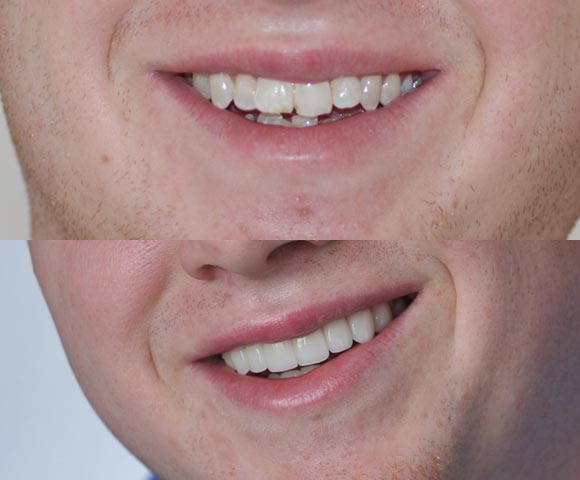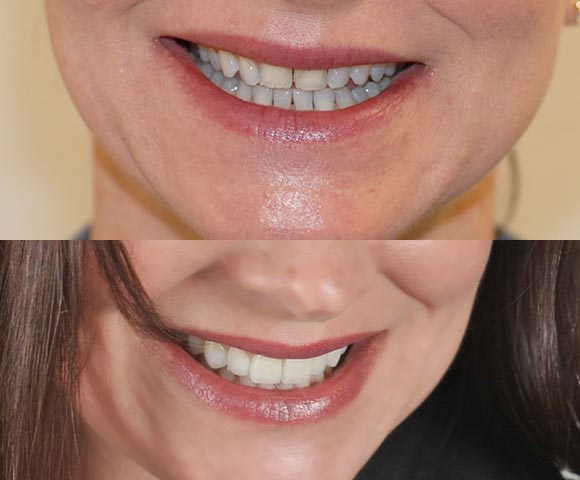What is periodontitis?
Periodontitis is a grave illness affecting the gums and bones that support the teeth. The inflammation passes through the gums and can penetrate the bone that holds the teeth in place. The symptoms include swollen and bleeding gums that can progress to a loose tooth or shifting teeth if left untreated. It is crucial to seek treatment for periodontitis as soon as possible to prevent further damage to the teeth and gums.
While gingivitis can be cured by adopting proper oral care and regular dental cleaning visits, periodontitis is a more advanced form of gum disease that is challenging to heal entirely. However, treatment can often help stop the disease's progression. As periodontitis becomes more severe, it can cause tooth mobility and eventual loss.
Periodontal disease is one of the two major oral health issues, along with tooth decay. It is a common condition that can affect anyone. Guinness World Records recognizes it as the most common infectious disease, affecting around 80% of adults. Therefore, practicing good oral hygiene and seeking regular dental care are essential to prevent and treat periodontal disease.
Periodontal disease frequently manifests without overt symptoms until it reaches an advanced stage. The emergence of painful chewing or tooth mobility signifies significant progression of the condition. As dental professionals, it is disheartening to convey to patients that their condition has advanced beyond recuperation, necessitating tooth extraction. Yet, the timely pursuit of dental intervention at the onset of minor indications such as gum bleeding or halitosis can salvage your dental integrity. Consulting a dentist is imperative to stave off irreversible harm to your oral well-being.
In the worst-case scenario, you may need to have your teeth removed
Dental implant treatment may be necessary if periodontal disease necessitates teeth removal. The procedure involves placing an artificial tooth root, an implant body, directly into the jawbone. Unlike dental bridges, implants provide a more stable bite and do not require the removal of adjacent teeth.
While implant treatment costs more than bridges, many insurance companies cover it. Eating with your natural teeth is an essential experience, and implants can help restore this ability. It is crucial to prioritize the treatment of gum disease before pursuing orthodontic or cosmetic dental care. Periodontitis weakens tooth support and can lead to premature tooth shifting. Seeking treatment from a periodontist is essential to address gum disease and prevent further complications.
With periodontitis, also known as periodontal disease, tooth support is weak, and tooth flare can occur prematurely. You must first see a periodontist and treat gum disease before engaging in orthodontics and cosmetic dental care if you have gum disease.
By the time you notice, it is often too late to prevent the horror of periodontal disease.
Periodontal disease checklist
- The swollen gums (red color).
- Purplish red gums (healthy gums are light pink with no spots).
- Bleeding from the gums (when brushing teeth, chewing apples, etc.).
- My gums feel itchy.
- When I feel sick, I feel like my teeth are floating.
- Bad breath.
- The mouth is sticky.
- Pus comes out of the gums.
- Loose teeth. Teeth sway or hard to bite.
- Teeth look longer than before.
- The gap between the teeth becomes larger.
- Teeth alignment becomes off.
- I haven't had a teeth cleaning for over a year.
- Have a smoking habit.
- Have or had diabetes.
Treating Gum Problems: An Easy Guide
To treat gum problems like gingivitis and periodontitis, dentists use special dental tools to clean away plaque and tartar, which build up between teeth and gums. Sometimes, just removing buildups can make your gums feel better. But if the problem is more severe or there are other issues, like the shape and location of your teeth, extra treatment may be necessary, including periodontal surgery.
Periodontal disease can progress differently in different parts of your mouth, so measuring pocket depth and bleeding spots at each treatment stage is essential. Maintaining good oral hygiene is also crucial, as the disease can recur if not appropriately managed. If you don't care for it, the problem might come back. So, visit your dentist regularly for check-ups and cleanings to keep your mouth healthy.
To prevent periodontal disease
Establishing a daily oral hygiene routine is vital in preventing periodontal disease. Thoroughly brushing teeth and utilizing dental floss to eliminate plaque between teeth are indispensable practices. Streptococcus mutans, the bacterium accountable for tooth decay, generates acid capable of corroding teeth. Moreover, periodontal infections frequently involve anaerobic bacteria such as Treponema denticola and Porphyromonas gingivalis.
Routine dental cleanings every six months are pivotal in averting gum disease and other oral ailments like tooth decay. Additionally, fluoride toothpaste and controlling sugar consumption contribute to maintaining oral health. Xylitol gum, when chewed, also serves as a deterrent against tooth decay. Adopting these preventive measures can significantly diminish the risk of developing periodontal disease.
About
Dr. Shimizu is an accredited fellow member of the American Academy of Cosmetic Dentistry. There are 486 dental professionals worldwide (Only two in Houston) as of 2024 who have achieved this prestigious honor.


